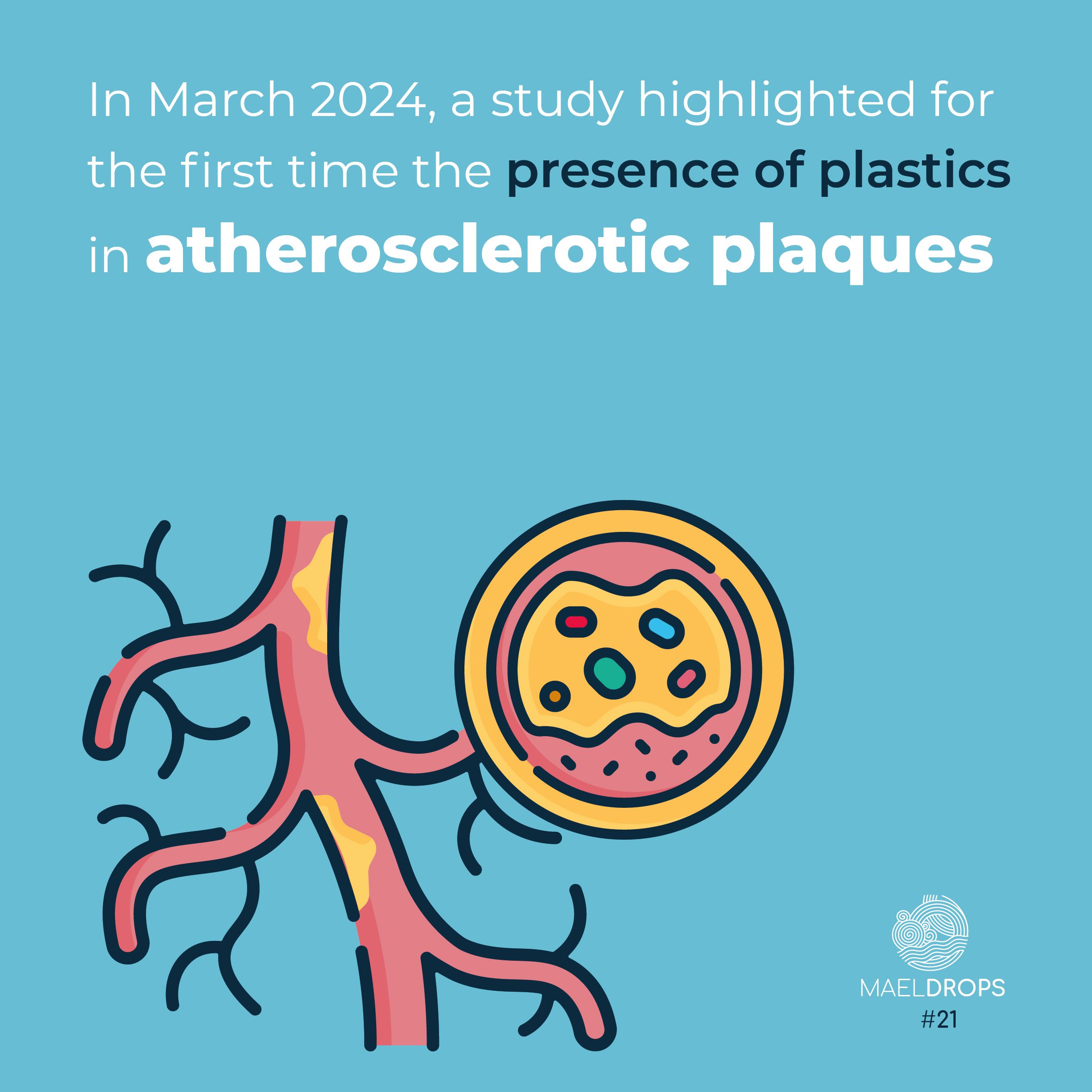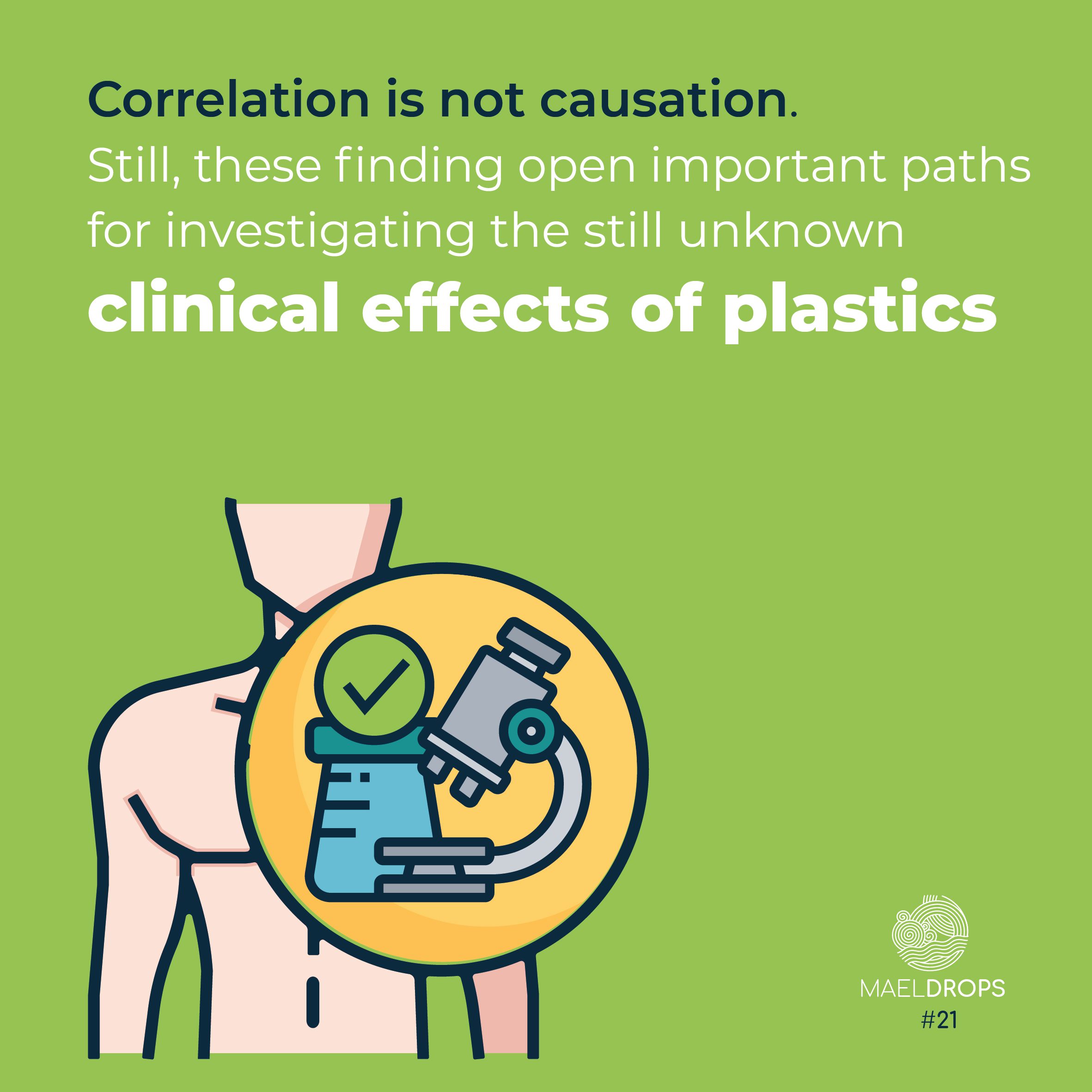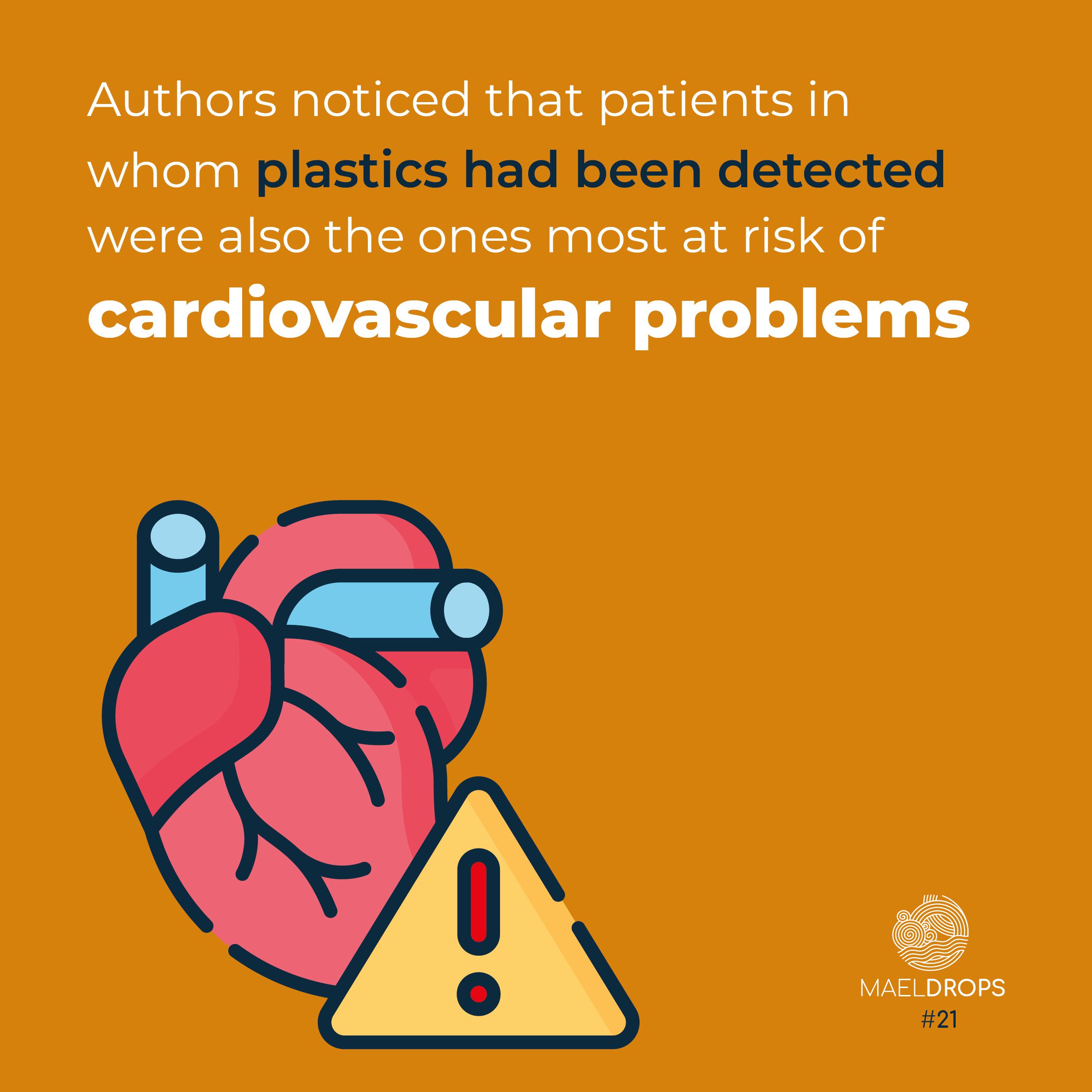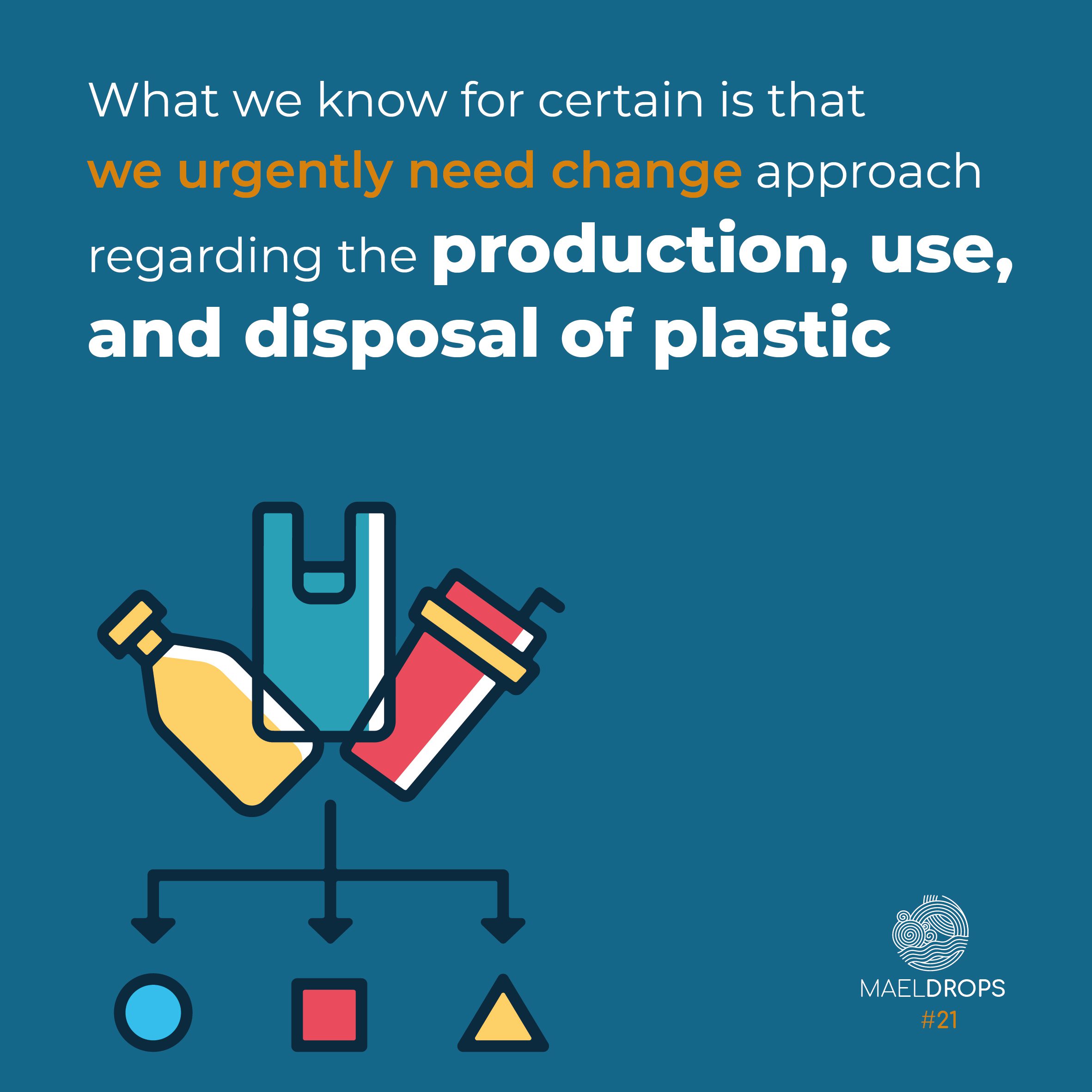MAELDrop #21 | The effects of plastics on human health, pt. 2
A while ago, in one of our MAELDrop, we talked about how little we still know about the effects that plastic – especially micro and nanoplastics (MNPs), which accumulate in tissues – has on human health.
Although studies still have some limitations, it has been possible to highlight some effects of plastics in terms of inflammation and oxidative damage, as well as possible mechanical stresses on cells. Much less clear is the clinical effect of this material within our bodies.
This year, a study revealed the presence of microplastics and nanoplastics in atherosclerotic carotid plaques for the first time. The researchers found MNPs in more than half of the patients who underwent surgery and were part of the study. Monitoring these patients over subsequent months, they observed that those with detectable MNPs faced a higher risk of cardiovascular events when compared with patients in whom MNPs were not detected. Additionally, these patients exhibited elevated levels of inflammatory molecules. This suggests a potential pathogenic mechanism of plastics: heightened inflammation renders the atherosclerotic plaques more susceptible to rupture, clot formation and potential complications such as heart attacks or embolisms. Subsequently, another study published shortly after echoed these findings.
However, attention: correlation is not causation. It has not been possible to demonstrate that the increased cardiovascular risk was directly correlated with the presence of plastic, Still, the correlation observed raises important questions to guide future studies: is plastic really a risk factor? In which quantities does it become dangerous? What other organs can be impacted by its presence and how? There are many open questions, yet one certainty remains: it is time to quickly change our approach regarding the production, use, and disposal of plastic.



